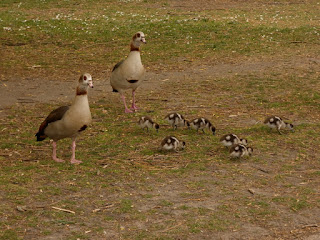Mark Williams reports that a pair of Grey Wagtails at Clapton Pond are feeding young ones.
We have at least three Grey Wagtails here, and with luck we should see the same soon.
A Carrion Crow was eating a Feral Pigeon which I think had been killed by a Sparrowhawk that was soon frightened off the kill, because it was more or less complete apart from its head. Crows can eat pigeons more easily than the famous gull because they have strong grasping feet and can hold their meal steady while pecking it.
Another crow was eating rice in the Diana fountain enclosure. But there has been an almost complete cessation of people coming to the park and dumping unsuitable food on the birds.
This is one of the Jays that comes to take peanuts from my hand. It chatters from a tree to get my attention.
The pigeon-eating Lesser Black-Backed Gull had found another large dead fish. Perhaps these fish are dying of exhaustion after spawning.
Young Herring Gulls quarrelled over a bit of food.
The injured Grey Heron in the Dell was looking less miserable than recently, and standing up and flying around.
A pair of Great Crested Grebes displayed at the island.
The single Coot chick on the Long Water was being fed by both its parents at once.
The Coot that was starting a nest in a pedalo yesterday has made rapid progress.
With all the pedalos unused and untended, it seems strange that this Coot has built a futile and unusable nest on the edge of the lake.
The Egyptian Goose with seven goslings was sheltering them from the wind and drizzle.
Sad to say, the single Egyptian gosling on the Long Water is dead. But the older one on the Serpentine is soldiering on.
Duncan Campbell reports that the Egyptians at Marble Arch still have nine goslings, which were happily using the wooden ramp provided for them. This was made by the man who looks after the garden on the traffic island, whose name is Rennie or René.
The Red-Crested Pochard with the Mallard mate was alone again today. Probably she's nesting somewhere. We might see some hybrid ducklings, though she has to survive the attention of the foxes and they have to dodge the gulls.
























































